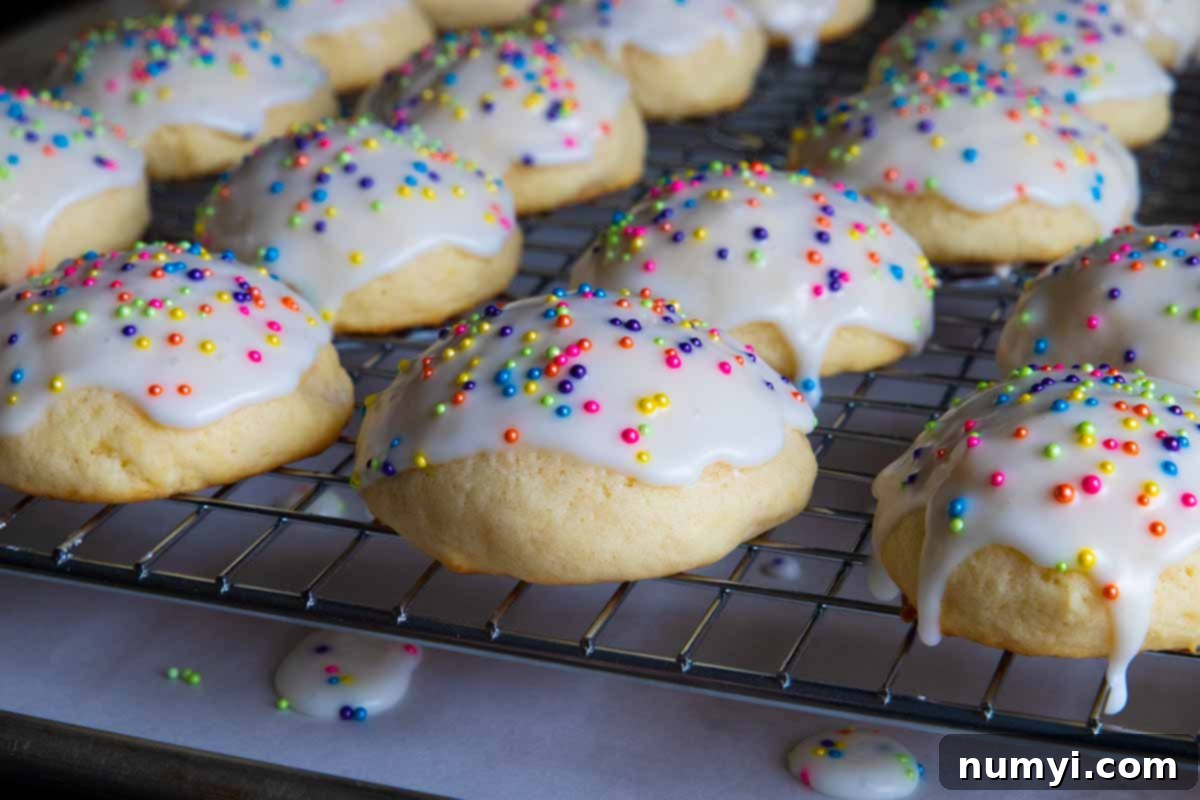The Best Italian Ricotta Cookies: A Timeless Recipe for Soft, Glazed Holiday Delights
Indulge in a beloved Italian tradition with these exquisite Italian ricotta cookies. Renowned for their wonderfully thick, soft, and cake-like crumb texture, these delightful treats are adorned with a simple yet irresistible sweet glaze. They are a cherished staple during Christmas and Easter holidays, bringing joy and a taste of authentic Italian baking to any celebration.
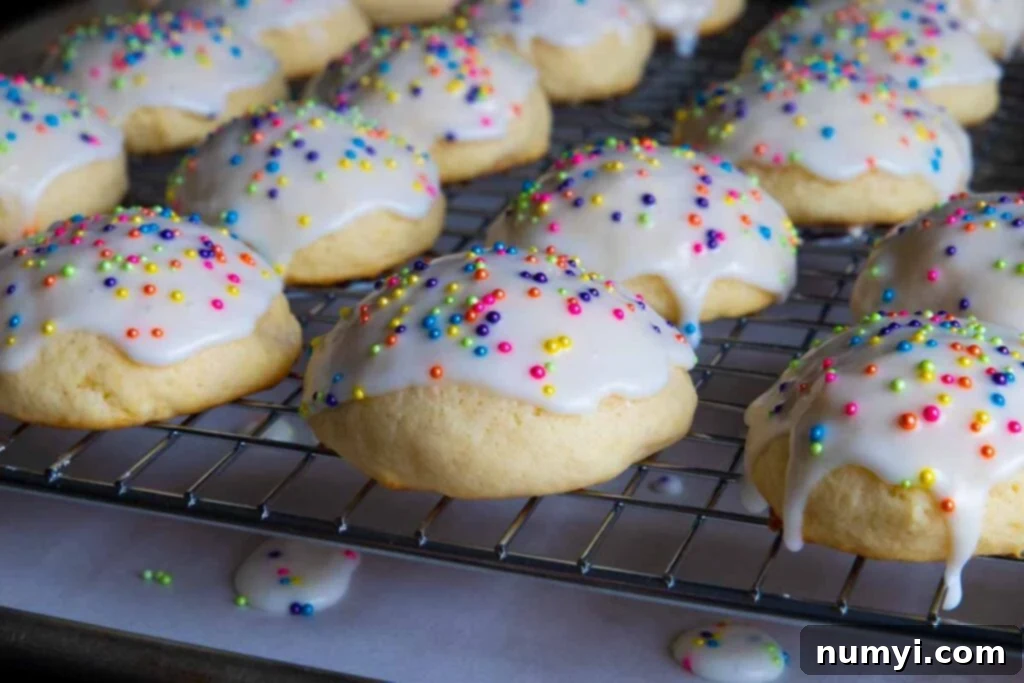
For those new to ricotta cookies, a common question arises: “Will they taste like cheese?” The answer is a resounding no! Rest assured, the ricotta cheese in this recipe serves a magical purpose, transforming ordinary cookies into extraordinarily soft, moist, and tender bites. It imparts a delicate richness and an unparalleled texture without leaving any discernible cheesy flavor. Instead, it creates a pillowy-soft crumb that melts in your mouth, making these cookies truly unforgettable.
The culinary landscape is dotted with countless recipes for these traditional Italian cookies, with many families holding their own closely guarded secrets passed down through generations. My own journey to perfect this recipe involved extensive testing and experimentation. Despite my grandparents hailing from Sicily, our family didn’t have a traditional ricotta cookie recipe. This absence spurred me to create a version that truly captured the essence of what these cookies should be: perfectly flavored, wonderfully tender, and utterly delicious. After numerous trials, I am confident that this recipe achieves the desired balance of sweetness, texture, and authentic Italian charm, and I believe my grandparents would wholeheartedly approve of this yummy cookie!
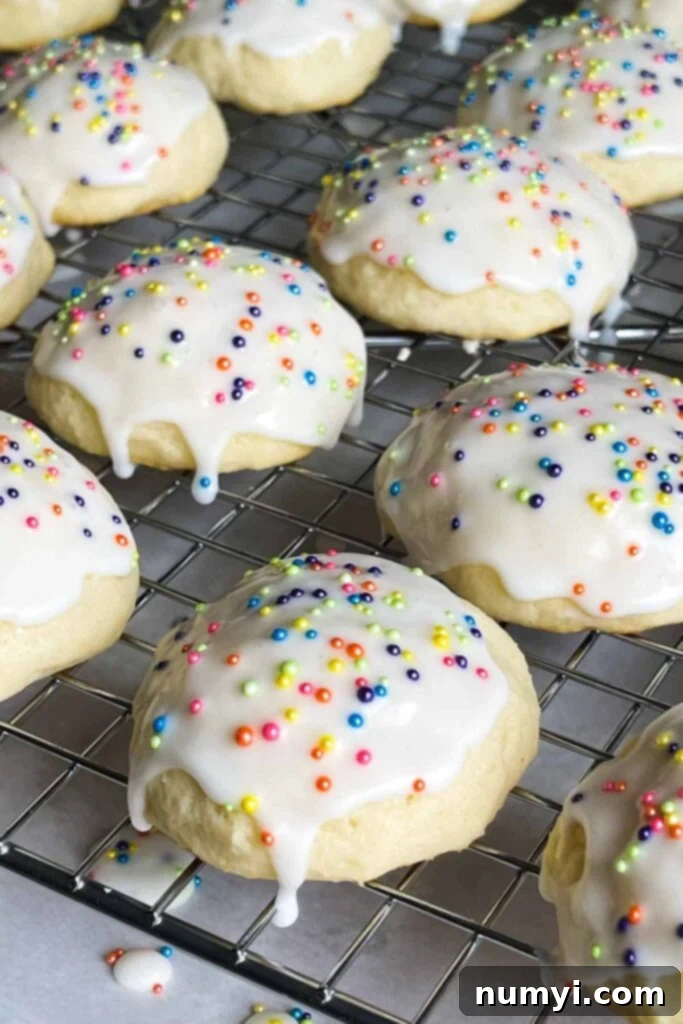
What Makes This Italian Ricotta Cookie Recipe Stand Out
This Italian ricotta cookie recipe is more than just a collection of ingredients; it’s a testament to simple, reliable baking that yields consistently delightful results. These cookies are not only perfect for Christmas, but their adaptability makes them a fantastic choice for any occasion. While the classic red and green nonpareil sprinkles are synonymous with holiday cheer, you can easily customize the sprinkles to match any theme or celebration – think pastel hues for Easter or baby showers, vibrant colors for birthdays, or even school colors for graduation parties. Their charming appearance and universally loved flavor profile make them a go-to treat that everyone, from young children to seasoned cookie connoisseurs, will enjoy.
What truly sets this recipe apart is the meticulous balance of ingredients that ensures a moist, tender, and cake-like interior without being overly dense. The use of ricotta is a game-changer, acting as a secret weapon for supreme moisture and a delicate crumb, making these cookies distinct from drier, more traditional sugar cookies. The subtle hint of almond extract, a hallmark of many Italian desserts, elevates the flavor profile, adding a sophisticated depth that complements the vanilla beautifully. Furthermore, the straightforward baking process and simple glazing technique mean that even novice bakers can achieve bakery-quality results, making this a favorite recipe for its ease, versatility, and undeniable deliciousness.
Essential Ingredients for Perfect Ricotta Cookies
Crafting the perfect Italian ricotta cookie starts with selecting quality ingredients. Each component plays a vital role in achieving that signature soft texture and delightful flavor. Here’s what you’ll need for the cookies and why each element is important:
- All-purpose flour: The foundation of our cookie. For best results, always aerate your flour by spooning it into your measuring cup and then leveling it off with a straight edge. This prevents compaction, which can lead to dense, dry cookies. Properly measured flour ensures a light and tender crumb.
- Baking powder: This leavening agent is critical for giving these cookies their characteristic height and fluffy, cake-like texture. Using a full tablespoon might seem like a lot, but it’s essential for achieving that traditional Italian ricotta cookie rise and softness.
- Unsalted butter: Always start with unsalted butter, softened at room temperature. This allows you to control the salt content of your cookies. Room temperature butter creams beautifully with sugar, incorporating air for a lighter cookie. In my testing, I found added salt unnecessary, as the butter already contributes richness.
- Granulated sugar: Provides the essential sweetness and contributes to the golden-brown edges and soft center. Its fine crystals also help create a smooth, airy base when creamed with butter.
- Vanilla extract: Use a high-quality, pure vanilla extract. Vanilla is a cornerstone flavor in most baked goods, providing warmth and depth that truly enhances the overall taste of these cookies.
- Almond extract: A distinguishing ingredient in many traditional Italian desserts, almond extract adds a unique, fragrant, and slightly nutty dimension that pairs wonderfully with the vanilla and ricotta. Don’t skip it if you want that authentic Italian flavor profile!
- Eggs: Large eggs, brought to room temperature, are crucial. Room temperature eggs emulsify better with the butter and sugar, creating a smoother batter and a more uniform texture in your finished cookies. They also add richness and act as a binder.
- Whole milk ricotta cheese: This is the star ingredient! Whole milk ricotta is essential for imparting the incredible moisture, tenderness, and rich, cake-like crumb that these cookies are famous for. It doesn’t contribute a cheesy flavor but rather a subtle richness and an unbelievably soft texture. I highly recommend using a good quality brand like Galbani, as it tends to be less watery, which is key for dough consistency. If your ricotta seems particularly wet, you can drain it in a fine-mesh sieve lined with cheesecloth for about 30 minutes to an hour to remove excess liquid.
Ingredients Needed for the Irresistible Cookie Glaze
The simple yet elegant glaze is the crowning glory of Italian ricotta cookies, adding an extra layer of sweetness and a beautiful finish. You’ll need just a few basic ingredients:
- Powdered sugar (confectioners sugar): The base of our glaze, powdered sugar dissolves easily to create a smooth, lump-free coating. Its fine texture is essential for achieving that classic silky glaze.
- Milk or heavy cream: This liquid is used to thin the powdered sugar to the perfect drizzling or dipping consistency. Heavy cream will yield a richer, slightly thicker glaze, while milk provides a lighter, equally delicious option. Start with a small amount and add gradually.
- Sprinkles: These add a festive touch and a satisfying textural contrast. Nonpareils are traditional, but feel free to get creative with any color or shape to match your holiday or special occasion.
How To Master Italian Ricotta Cookies: A Step-by-Step Guide
Making these Italian ricotta cookies is a straightforward and rewarding process. Follow these detailed steps to achieve perfectly soft and flavorful results:
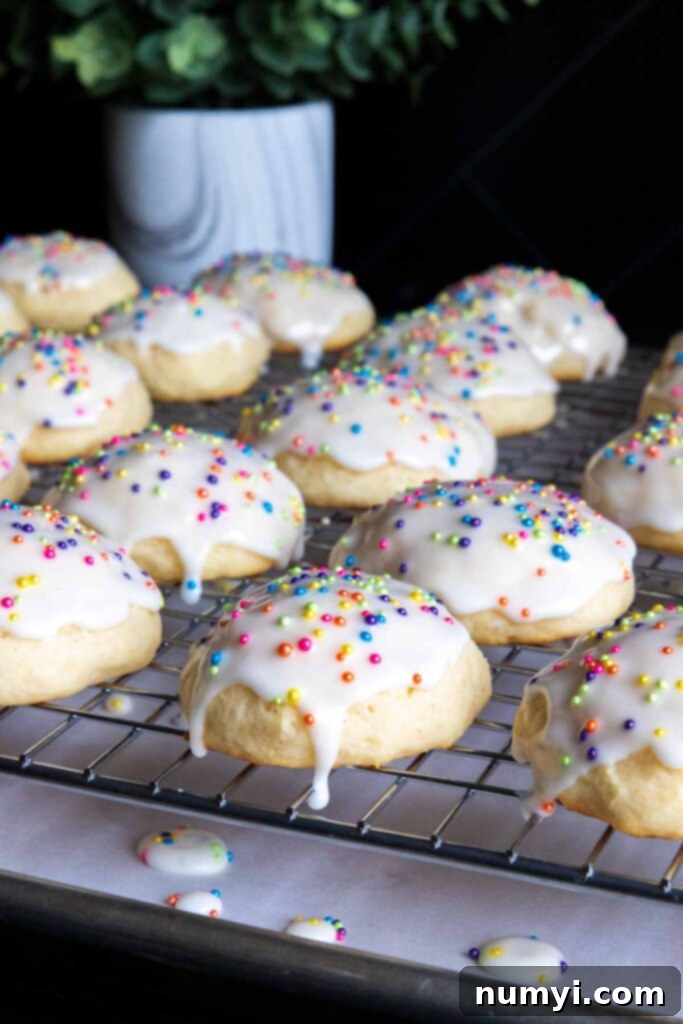
1. Prepare Dry Ingredients: In a medium-sized bowl, thoroughly whisk together the all-purpose flour and baking powder. This step is crucial for ensuring that the leavening agent is evenly distributed throughout the dry mixture, leading to a consistent rise in your cookies. Set this bowl aside for later use.
2. Cream Butter and Sugar: In a large mixing bowl, or the bowl of a stand mixer fitted with the paddle attachment, beat the softened unsalted butter and granulated sugar together at medium speed. Continue mixing for about 3 minutes, or until the mixture becomes notably light, fluffy, and pale in color. This creaming process incorporates air, which is fundamental to the soft, cake-like texture of these cookies.
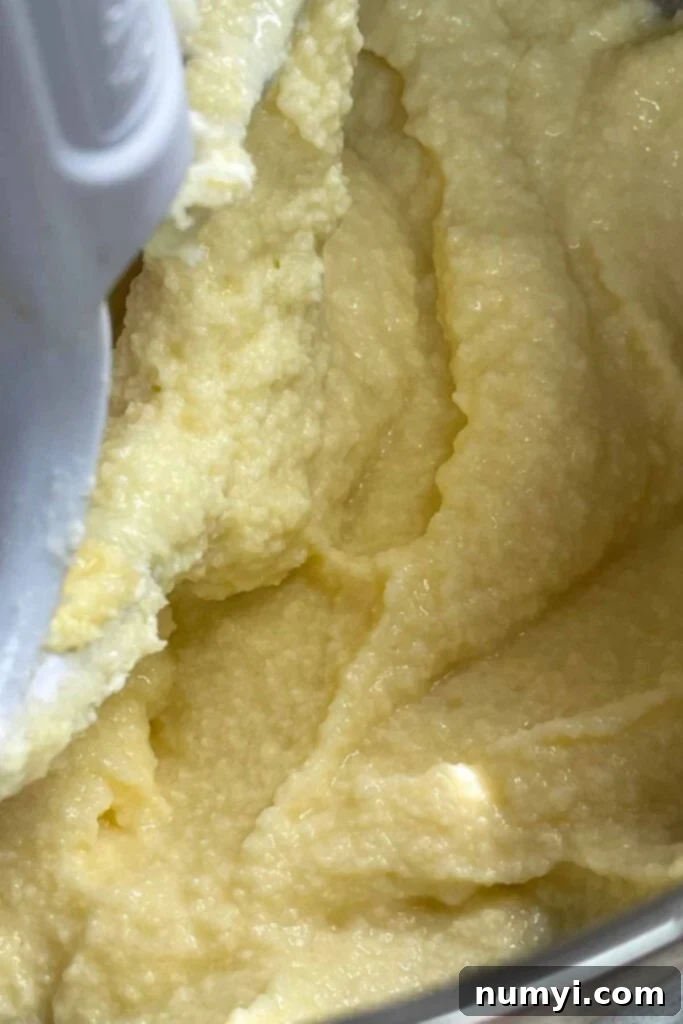
3. Incorporate Wet Ingredients: Add the two teaspoons of pure vanilla extract and the one teaspoon of almond extract to the creamed mixture, mixing until just combined. Next, crack and add the eggs one at a time, beating well after each addition until fully incorporated. Scrape down the sides of the bowl as needed to ensure everything is evenly mixed. Finally, add the whole milk ricotta cheese and mix until the mixture is smooth and fully combined. The ricotta will add significant moisture and richness.

4. Combine Wet and Dry: Gradually add the whisked flour mixture to the wet ingredients, mixing on low speed until just combined. Be careful not to overmix, as this can develop the gluten in the flour and result in tougher cookies. The dough will be noticeably sticky at this stage. Once combined, cover the bowl and refrigerate the dough for at least one hour. While you can technically bake these immediately, I highly recommend chilling the dough. Chilling firms up the butter, making the dough much easier to handle and roll into uniform balls, and it also helps prevent the cookies from spreading too much during baking, ensuring they retain their classic shape and height.
5. Prepare for Baking: Preheat your oven to 350 degrees F (175 degrees C). Line two large baking sheets with parchment paper or silicone baking mats. This ensures the cookies don’t stick and helps them bake evenly.
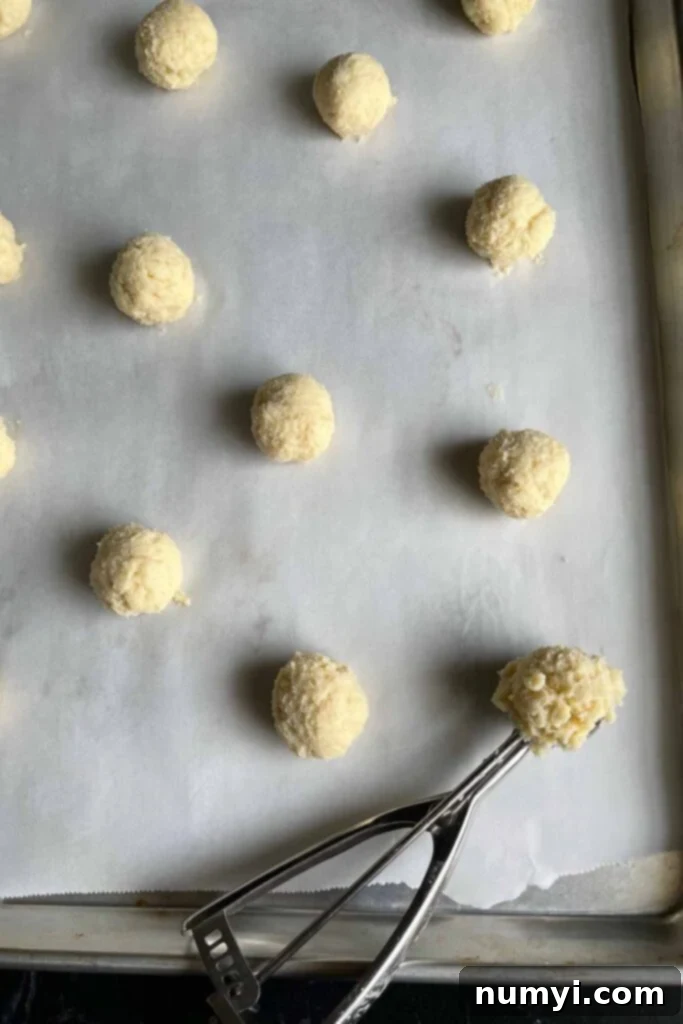
6. Scoop and Bake: Using a size #40 cookie scoop (which measures about 1 1/2 tablespoons), scoop out rounded portions of cookie dough. Roll each portion gently between your palms to form a smooth ball. Place the dough balls on the prepared baking sheets, spacing them about 1 1/2 inches apart to allow for slight spreading. Bake for 12-14 minutes, or until the edges are lightly golden and the centers are set but still soft. Avoid overbaking, as this can dry out the cookies. Allow the freshly baked cookies to cool on the baking pan for approximately 2 minutes before carefully transferring them to a wire cooling rack to cool completely. Cooling completely is essential before glazing to prevent the glaze from melting.
How to Glaze Your Delicious Ricotta Cookies
The sweet, glossy glaze is the perfect finishing touch for these tender cookies. Here’s how to achieve that picture-perfect coating:
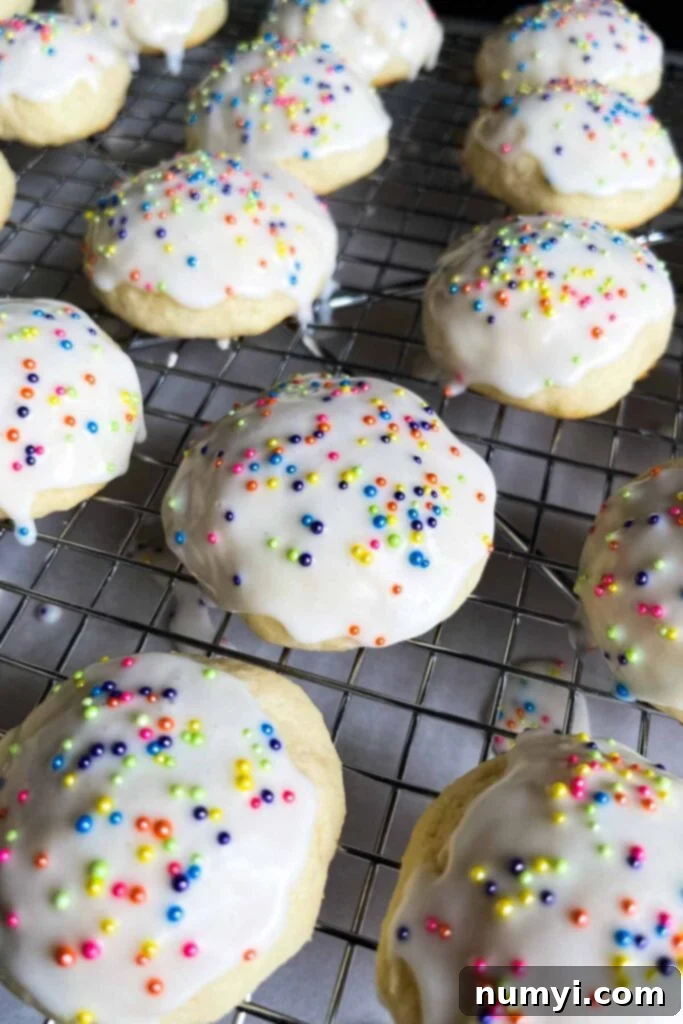
1. Prepare the Glaze: In a small bowl, combine the powdered sugar with 1 tablespoon of milk or heavy cream at a time. Whisk thoroughly until a smooth, thick, yet still pourable glaze is formed. The consistency should be thick enough to coat the back of a spoon but thin enough to drip slowly. If it’s too thick, add a tiny bit more milk; if too thin, add more powdered sugar. For an extra layer of flavor, you can also mix in 1/2 teaspoon of vanilla extract or a small dash of almond extract to the glaze if desired.
2. Glaze and Decorate: Once the cookies are completely cool, dip the top surface of each cookie into the prepared glaze. Allow any excess glaze to drip off back into the bowl. You want a good, even coating without it being excessively thick. Immediately after dipping each cookie, generously add your chosen nonpareil sprinkles. It’s crucial to add the sprinkles while the glaze is still wet, as they will not adhere once the glaze begins to set. Alternatively, you can spoon the glaze over the cookies, creating a beautiful domed effect, and then add sprinkles. Continue this process for all cookies.
3. Set and Serve: Place the glazed and sprinkled cookies back on the wire cooling rack. Allow the glaze to set completely, which can take anywhere from 30 minutes to an hour, depending on the thickness of your glaze and the humidity in your kitchen. Once the glaze is firm to the touch, your Italian ricotta cookies are ready to be stored or served. Prepare for them to disappear quickly! These melt-in-your-mouth delicious ricotta cookies are truly addictive – bet you can’t eat just one!
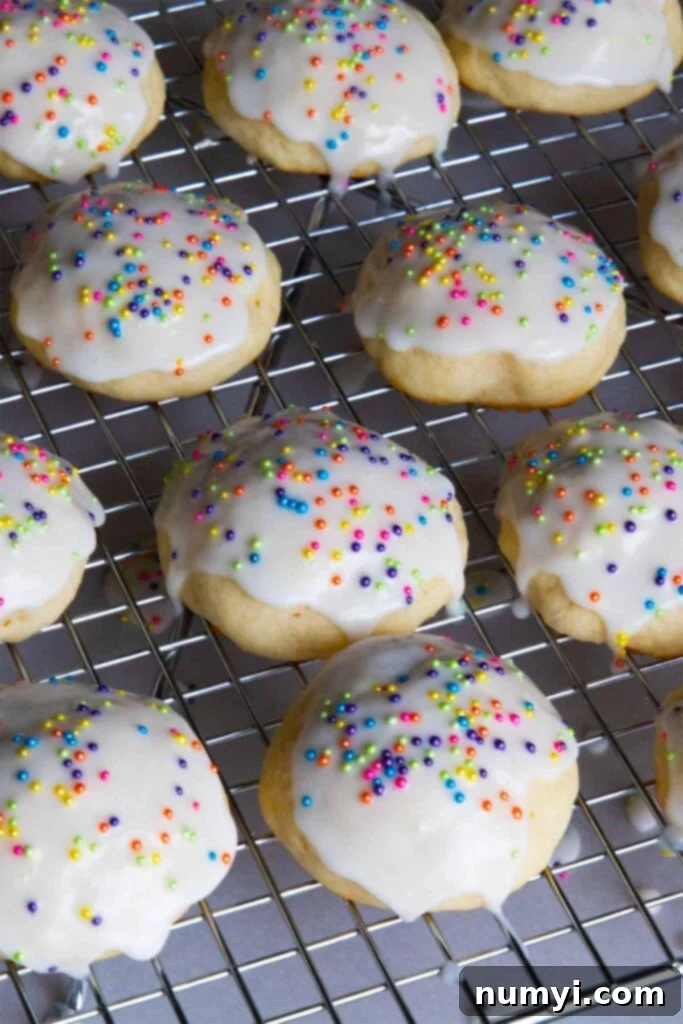
Frequently Asked Questions About Italian Ricotta Cookies
Absolutely! These delightful cookies are excellent for making ahead and freezing. For best results, bake the cookies as directed, allow them to cool completely, but do not glaze them. Arrange the unglazed cookies in a single layer on a baking sheet and flash freeze them until solid (about 1-2 hours). Once frozen, transfer them to an airtight freezer-safe container or a heavy-duty freezer bag, separating layers with parchment paper to prevent sticking. The baked cookies will keep wonderfully in the freezer for up to 2 months. When you’re ready to enjoy them, simply thaw them on the kitchen counter at room temperature for a few hours, then prepare and apply the glaze as instructed. This makes holiday baking much easier!
Proper storage is key to maintaining the freshness and tenderness of your Italian ricotta cookies. Once glazed and completely set, store them in an airtight container at room temperature. They will remain wonderfully fresh and soft for 4 to 5 days. If you prefer to extend their shelf life, you can refrigerate them in an airtight container for up to a week. Just be sure to bring them back to room temperature before serving for the best flavor and texture.
While some recipes might suggest alternatives, for authentic Italian Ricotta Cookies, it’s highly recommended to use whole milk ricotta cheese. The unique texture and moisture that ricotta provides are fundamental to the cookies’ signature soft, cake-like crumb. Substituting with cream cheese or cottage cheese, for example, will significantly alter the texture and flavor, resulting in a different cookie altogether. If your ricotta is watery, ensure you drain it properly before using.
A slightly sticky dough is normal for these cookies, especially before chilling. Chilling the dough for at least an hour will firm it up considerably, making it much easier to handle and roll. If, after chilling, your dough is still excessively sticky, you can try lightly flouring your hands while rolling, or adding a tablespoon or two of extra flour to the dough (mix just until combined). If your dough seems too dry and crumbly, it might be due to over-measuring flour or very dry ricotta. You can try adding a tablespoon of milk or cream to the dough and mixing briefly until it just comes together.
More Delicious Italian Cookie Recipes to Explore
- Italian Sesame Seed Cookies (Biscotti Regina)
- Amaretti Cookies
- Italian Butterball Cookies
- Italian Fig Cookies (Cucidati)
- Almond Biscotti
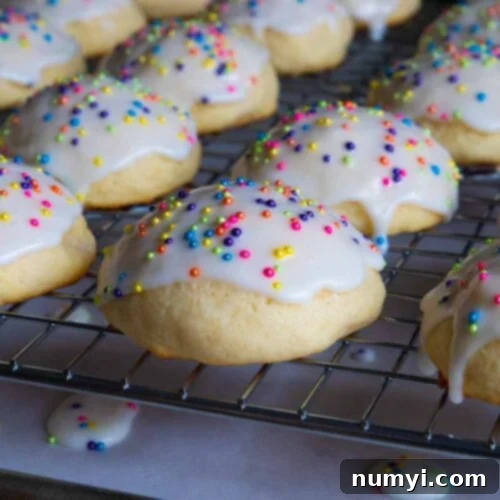
Classic Italian Ricotta Cookies Recipe
Print
Pin
Rate
Ingredients
For the Ricotta Cookies
- 4 cups All-purpose flour (aerated, scooped, and leveled)
- 1 tbsp Baking powder (crucial for lift and cake-like texture)
- 1 cup Unsalted butter (2 sticks, softened to room temperature)
- 1 1/2 cups Granulated sugar (for sweetness and tender crumb)
- 2 tsp Vanilla extract (use a good quality pure vanilla)
- 1 tsp Almond extract (for authentic Italian flavor)
- 2 large Eggs (at room temperature for better incorporation)
- 15 oz Whole milk ricotta (provides moisture and soft crumb, brand like Galbani is ideal for its thicker consistency)
For the Ricotta Cookie Glaze
- 2 cups Powdered sugar (confectioners sugar, sifted if lumpy)
- 3 tbsp Milk or heavy cream (start with 2 tbsp, add more as needed for desired consistency)
- Nonpareils (or other decorative sprinkles, any color to match your occasion)
Instructions
Italian Ricotta Cookies Preparation
-
In a medium-size bowl, thoroughly whisk the all-purpose flour and baking powder together until well combined. Set this dry mixture aside.
-
In a large bowl, using an electric mixer or stand mixer, beat the softened unsalted butter and granulated sugar together at medium speed for about 3 minutes, or until the mixture is light, fluffy, and pale.
-
Add the vanilla extract and almond extract, mixing briefly. Then, add the large room-temperature eggs one at a time, beating well after each addition until fully incorporated. Scrape down the sides of the bowl. Add the whole milk ricotta cheese and mix until the mixture is smooth and evenly combined.
-
Gradually add the reserved flour mixture to the wet ingredients, mixing on low speed until it’s just combined. Be careful not to overmix the dough. The dough will be sticky. Cover the bowl and refrigerate the dough for at least one hour. This chilling process makes the dough much easier to handle and helps prevent excessive spreading during baking.
-
Preheat your oven to 350 degrees F (175 degrees C). Line two large baking sheets with parchment paper or silicone baking mats.
-
Using a size #40 cookie scoop (equivalent to 1 1/2 tablespoons), scoop out a rounded amount of cookie dough. Roll the dough gently between your palms to form a smooth ball. Place the dough balls on the prepared baking sheets, ensuring they are spaced about 1 1/2 inches apart.
-
Bake for 12-14 minutes, or until the bottoms are lightly golden and the cookies are set. Do not overbake. Allow the cookies to cool on the baking pan for about 2 minutes before carefully transferring them to a wire cooling rack to cool completely. This is crucial before glazing.
Glaze and Decorate
-
In a small bowl, mix the powdered sugar with 1 tablespoon of milk (or heavy cream) at a time. Stir continuously until a smooth, thick, yet still pourable glaze is formed. For added flavor, you can also stir in 1/2 teaspoon of vanilla extract (or a dash of almond extract).
-
Dip the top of each completely cooled cookie into the glaze, allowing any excess to drip off. For the best result, immediately add your chosen nonpareil sprinkles onto the wet glaze. You can also spoon the glaze over the cookies if preferred. Remember to add sprinkles after dipping each individual cookie; otherwise, they will not adhere once the glaze begins to set. Allow the glazed cookies to set completely on the wire rack before storing or serving.
Nutrition
Adapted from thisitaliankitchen
